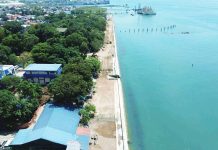
ILOILO City – Western Visayas’ population growth has slowed to its lowest in more than a decade, with the region recording a modest 0.66 percent annual increase between 2020 and 2024, according to the latest Census of Population by the Philippine Statistics Authority (PSA).
The July 1, 2024 census shows the region’s population at 4,861,911 — up by 131,143 from 2020, but growing at nearly half the pace of the previous five-year period, when the annual growth rate was 1.17 percent. From 2010 to 2015, growth averaged 1.25 percent annually.
“This deceleration may reflect several demographic transitions. Factors such as declining fertility rates, elevated mortality rates during the COVID-19 pandemic, increased out-migration to urban centers or overseas, and an aging population structure are all contributing to this trend,” said Harold Alfred Marshall, regional director of the Commission on Population and Development (CPD) Region 6.
However, he said, this slowdown can also create opportunities “as we approach a demographic dividend, where the proportion of working-age individuals increases relative to dependents, potentially benefiting the region’s economic development.”
Population Distribution and Trends
Iloilo Province remains the most populous in the region with 2.08 million residents, followed by Capiz (835,000), Antique (643,000), and Aklan (634,000).
Guimaras has the smallest population at 193,000.
Antique posted the fastest growth rate at 1.16 percent, while Iloilo Province recorded the slowest at 0.36 percent.
Iloilo City, with 474,000 residents, grew at 0.83 percent annually.
Excluding Iloilo City, Roxas City in Capiz is the largest urban center with 185,236 residents, followed by Oton, Iloilo (99,920) and Kalibo, Aklan (93,218).
Belison, Antique is the least populated municipality with 14,433 residents.
Barangay-Level Highlights
Manoc-Manoc in Malay, Aklan — home to Boracay Island — is the most populous barangay with 22,207 people, followed by Semirara in Caluya, Antique (15,954) and Andagao in Kalibo, Aklan (15,906).
Several barangays in Iloilo City and Pavia, Iloilo also rank among the Top 10, reflecting urbanization pressures in key growth corridors.
Demographic Challenges and Opportunities
CPD-6 noted that slower growth could ease pressure on public services and balance resource demands, but may also lead to fewer workers and slower innovation.
The fertility rate in Region 6 dropped from 4.2 children per woman in 1993 to 2.2 in 2022, mirroring the national decline to 1.9. This trend means more older adults and fewer young people, potentially straining social security systems, healthcare, and the labor force.
Western Visayas is now entering a new demographic phase that demands effective urban planning, economic diversification, and strong population and development (POPDEV) strategies. The Philippine Population and Development Plan of Action (PPD-POA) 2023–2028 aims to enhance POPDEV research to better understand the causes and implications of slower growth.
“We will shift our focus from numbers to improving human lives,” Marshall said./PN




